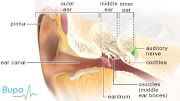Your mouth is one of the most important parts of your body. Any problem that affects your mouth can make it hard to eat, drink or even smile.
Some common mouth problems include
* Cold sores - painful sores on the lips and around the mouth, caused by a virus
* Canker sores - painful sores in the mouth, caused by bacteria or viruses
* Thrush - a yeast infection that causes white patches in your mouth
* Leukoplakia - white patches of excess cell growth on the cheeks, gums or tongue, common in smokers
* Dry mouth - a lack of enough saliva, caused by some medicines and certain diseases
* Gum or tooth problems
Treatment for mouth disorders varies, depending on the problem. Keeping a clean mouth by brushing and flossing often is important.
Some common mouth problems include
* Cold sores - painful sores on the lips and around the mouth, caused by a virus
* Canker sores - painful sores in the mouth, caused by bacteria or viruses
* Thrush - a yeast infection that causes white patches in your mouth
* Leukoplakia - white patches of excess cell growth on the cheeks, gums or tongue, common in smokers
* Dry mouth - a lack of enough saliva, caused by some medicines and certain diseases
* Gum or tooth problems
Treatment for mouth disorders varies, depending on the problem. Keeping a clean mouth by brushing and flossing often is important.




